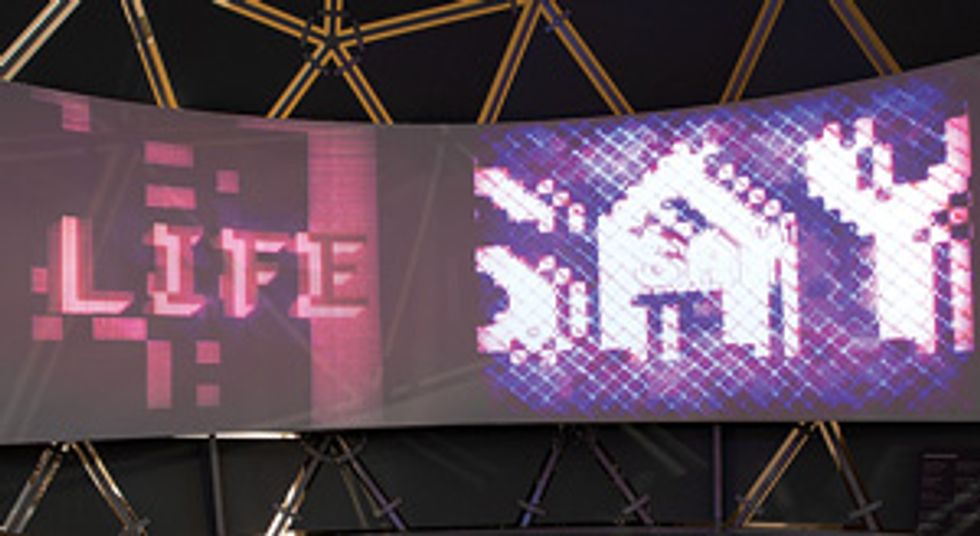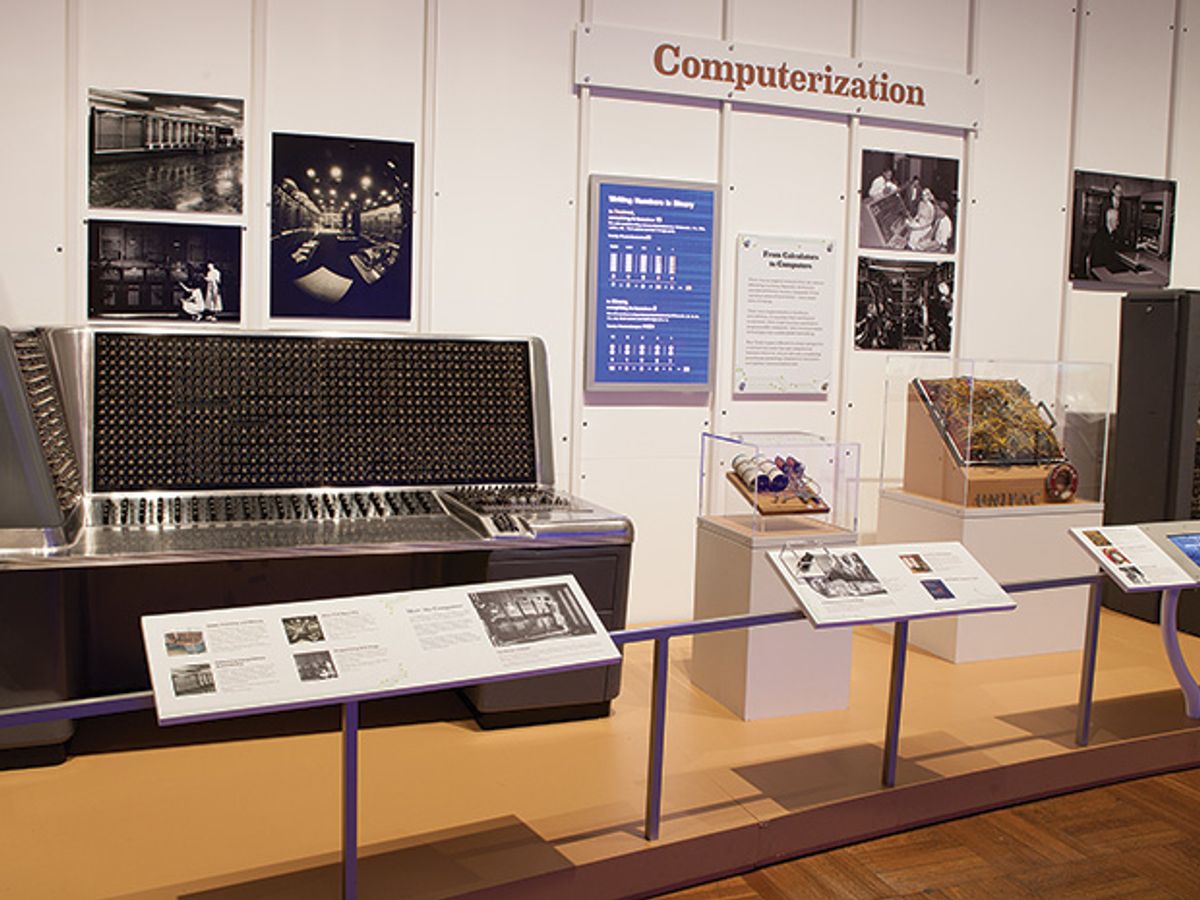Why am I typing out these words in a New York City office building? Because IEEE Spectrum is located in the official global headquarters of the IEEE; when two earlier organizations merged to form the IEEE in 1963, it was written into the founding regulations that HQ would be in NYC. The city was the obvious choice at the time: For decades, New York had been at the heart of global electrical and electronic invention. Edison’s first commercial power plant came to life in downtown Manhattan in 1882. During World War II, Alan Turing and Claude Shannon lunched together at the original Bell Telephone Laboratories location in Greenwich Village. And the surrounding area saw the first modern FM radio transmissions, the first transistor, and the first purely electronic color televisions.
A new exhibition at the New York Historical Society celebrates this technological heritage. Called Silicon City and open until mid-April, the small but well-curated exhibition focuses on the city’s role in the history of computing.
The entrance to Silicon City includes mementos from the 1964 New York World’s Fair, housed under a dome intended to evoke IBM’s egg-shaped pavilion at the fair. In hindsight this event represented the peak of New York’s command—and, by extension, that of the entire northeastern United States—over the global technological zeitgeist. And IBM-related items account for about half of the exhibition space.
IBM provided significant support for Silicon City, so this sizable presence isn’t a surprise. Perhaps, for example, the inclusion of a replica of Hollerith’s 1890 census tabulating machine might be stretching a point, since the machines were developed and manufactured in Washington, D.C. However, by and large, IBM’s dominance is justified. In the years between World War II and the rise of mini- and microcomputers, IBM pretty much was computing in the United States. In the late 1940s and early 1950s, people walking by IBM’s New York headquarters marveled at the giant Selective Sequence Electronic Calculator (SSEC), which had been installed in a room behind a large glass window. The SSEC is long gone, but visitors to Silicon City can marvel anew at its lovingly styled control desk, blanketed in switches and lights.

I was especially pleased to see a significant area devoted to early digital art. In 1966 a series of experimental performances were held at New York’s 69th Regiment Armory (where the so-called 1913 Armory Show, which introduced modern art to the United States, also took place). These performances were the culmination of a collaboration between scientists and engineers from Bell Labs and leading artists of the day. Silicon City allows visitors to call up extracts of performances and related artwork, and is a powerful reminder that art and digital technology have gone hand in hand for decades. The original oscilloscope that William Higinbotham used to create the Ur-video game, Tennis for Two, is here as well.
The rise of California’s Silicon Valley meant the end of NYC’s high-tech golden age. In more recent years, however, the city has seen a tech revival, with many Web and mobile startups calling the city home (the low physical footprint of online businesses is some defense against a city that has seen spiraling rents as its industrial zones are relentlessly converted into luxury condos). Silicon City confines the dark years of the ’70s and ’80s, and the subsequent boom and bust of the great dot-com crash, to a small video exhibit, before moving on to a much sunnier and larger display focused on the present day. This features scenes from Manhattan and Brooklyn, boasting about the location of companies such as Etsy, Shapeways, and Tumblr, and showcasing some of their wares. But then, it wouldn’t really be NYC without a little bit of braggadocio.
This article appears in the January 2016 print issue as “New York’s Digital Past.”
Stephen Cass is the special projects editor at IEEE Spectrum. He currently helms Spectrum's Hands On column, and is also responsible for interactive projects such as the Top Programming Languages app. He has a bachelor's degree in experimental physics from Trinity College Dublin.



